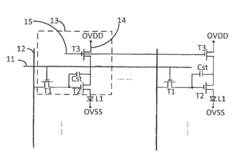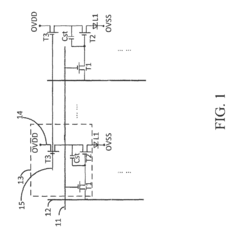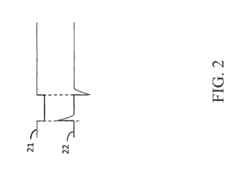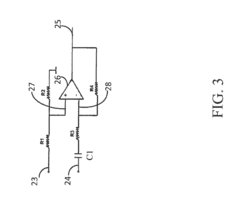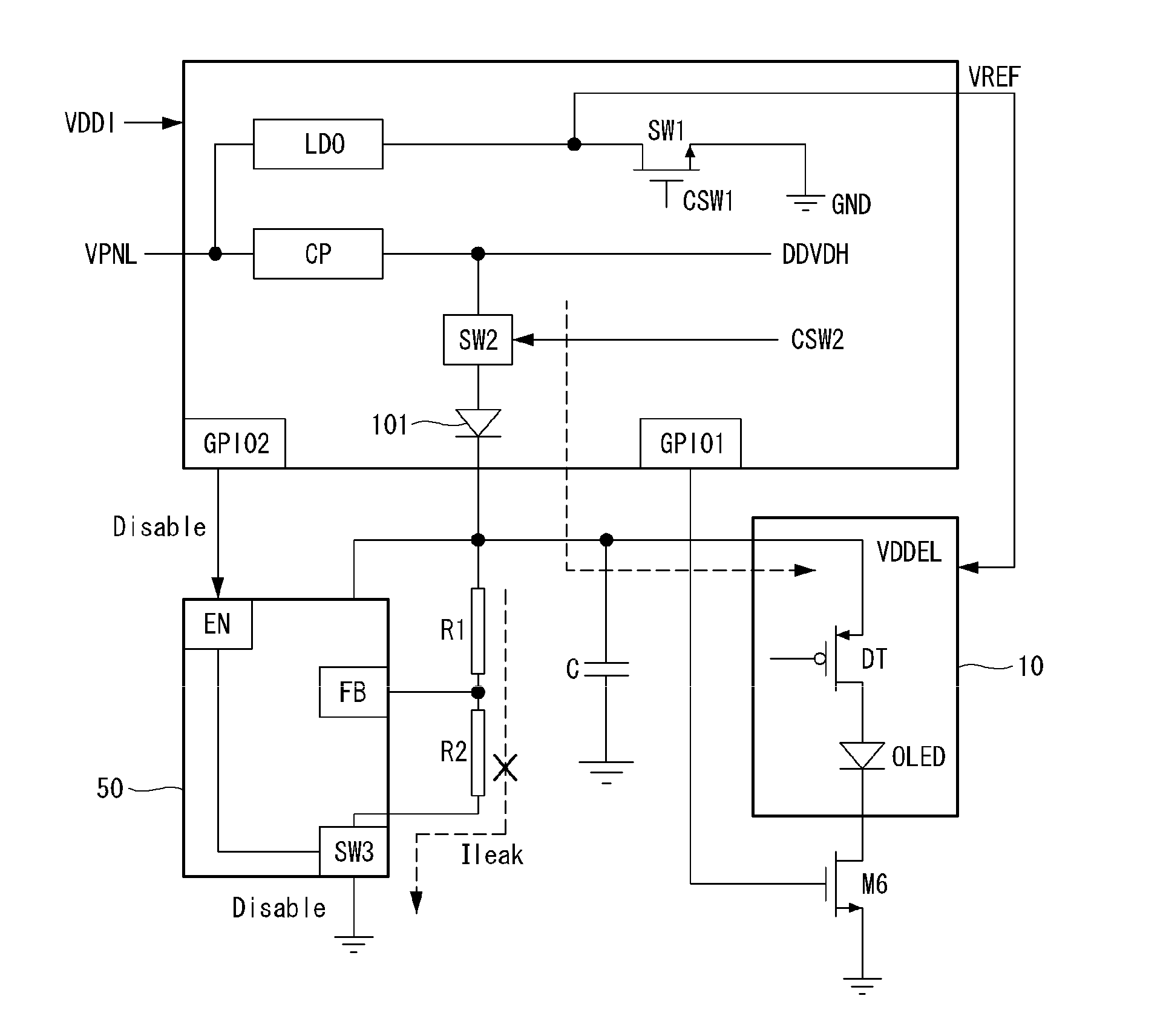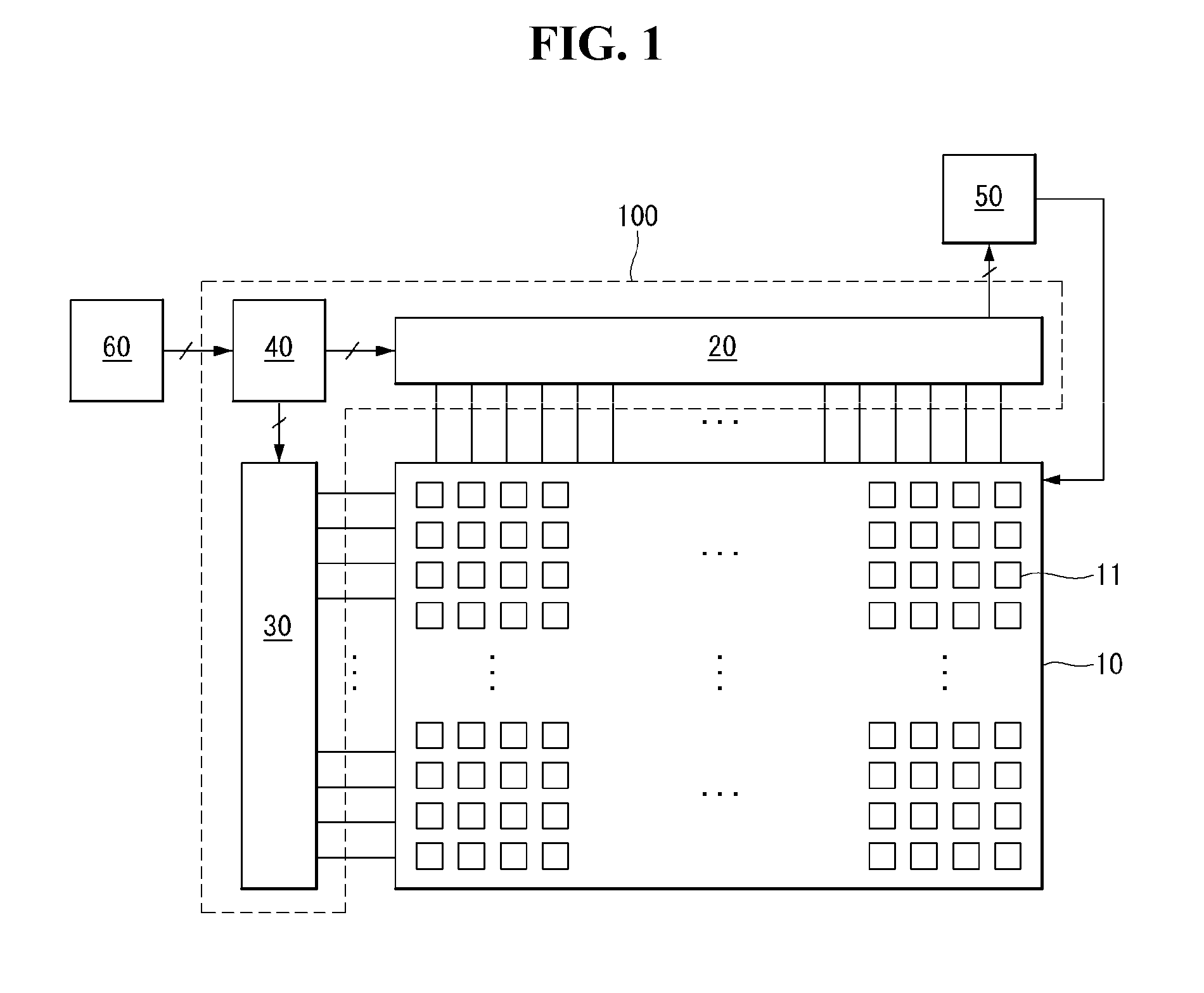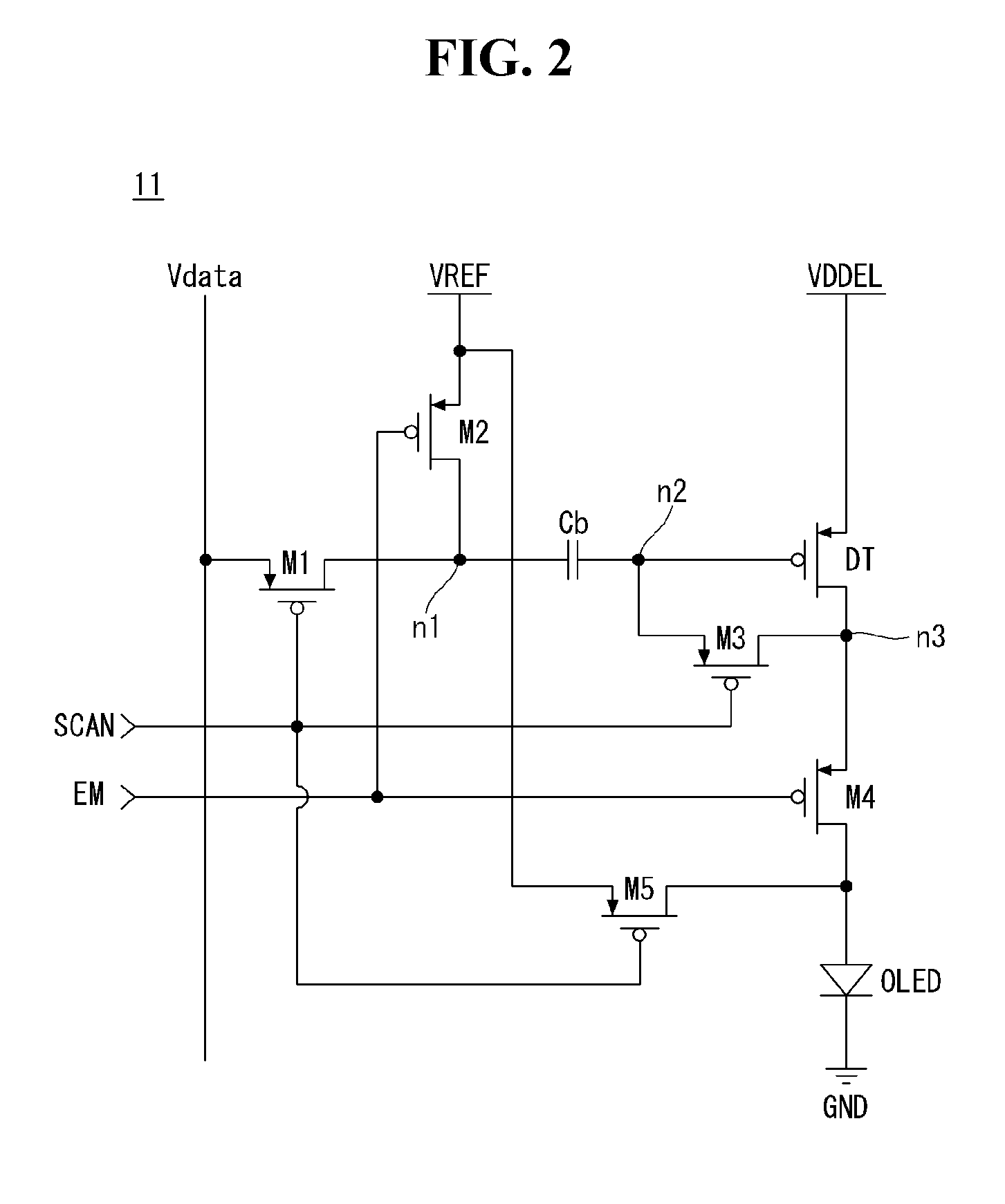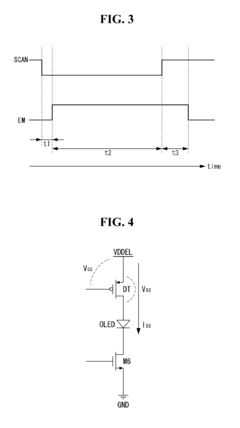Optimize OLED Interface Design for Reduced Input Lag
SEP 12, 20259 MIN READ
Generate Your Research Report Instantly with AI Agent
Patsnap Eureka helps you evaluate technical feasibility & market potential.
OLED Interface Evolution and Latency Reduction Goals
OLED technology has undergone significant evolution since its commercial introduction in the late 1990s. Initially, OLED displays suffered from substantial input lag issues, with response times exceeding 10ms, making them unsuitable for high-performance applications like gaming and professional video editing. The technological progression has been marked by continuous improvements in organic materials, driving circuits, and interface protocols that collectively contribute to latency reduction.
Early OLED interfaces relied on standard LVDS (Low-Voltage Differential Signaling) connections, which created bottlenecks in data transmission and contributed to noticeable input lag. The transition to eDP (Embedded DisplayPort) and HDMI 2.0 interfaces around 2015 represented a significant milestone, reducing signal processing delays by approximately 30% compared to previous generations.
The current technological frontier focuses on achieving sub-1ms input lag for OLED displays, a threshold considered imperceptible to human users even in the most demanding applications. This ambitious goal requires holistic optimization across the entire display pipeline, from signal reception to pixel illumination. Industry benchmarks suggest that competitive gaming and simulation environments require input lag below 5ms, while professional video production demands even stricter performance under 3ms.
Recent advancements in OLED interface design have introduced adaptive refresh rate technologies that dynamically synchronize the display's refresh cycle with incoming signals, significantly reducing perceived latency. Variable refresh rate (VRR) protocols like HDMI Forum VRR, VESA Adaptive-Sync, and proprietary solutions such as NVIDIA G-SYNC and AMD FreeSync have become integral components of modern OLED interface architectures.
The technical trajectory indicates a convergence toward unified high-bandwidth interfaces capable of supporting not only reduced latency but also increased color depth, higher refresh rates, and enhanced resolution. HDMI 2.1 with its 48Gbps bandwidth and DisplayPort 2.0 offering up to 80Gbps represent the current pinnacle of this evolution, enabling sub-millisecond theoretical latencies when paired with optimized OLED panel drivers.
Looking forward, the industry has established clear latency reduction targets: achieving consistent sub-1ms input lag across all operational conditions by 2025, developing predictive rendering algorithms that can further reduce perceived latency through intelligent frame prediction by 2027, and ultimately working toward "zero-lag" interfaces that leverage quantum computing principles for signal processing by 2030. These ambitious goals are driving substantial R&D investments across the display technology ecosystem.
Early OLED interfaces relied on standard LVDS (Low-Voltage Differential Signaling) connections, which created bottlenecks in data transmission and contributed to noticeable input lag. The transition to eDP (Embedded DisplayPort) and HDMI 2.0 interfaces around 2015 represented a significant milestone, reducing signal processing delays by approximately 30% compared to previous generations.
The current technological frontier focuses on achieving sub-1ms input lag for OLED displays, a threshold considered imperceptible to human users even in the most demanding applications. This ambitious goal requires holistic optimization across the entire display pipeline, from signal reception to pixel illumination. Industry benchmarks suggest that competitive gaming and simulation environments require input lag below 5ms, while professional video production demands even stricter performance under 3ms.
Recent advancements in OLED interface design have introduced adaptive refresh rate technologies that dynamically synchronize the display's refresh cycle with incoming signals, significantly reducing perceived latency. Variable refresh rate (VRR) protocols like HDMI Forum VRR, VESA Adaptive-Sync, and proprietary solutions such as NVIDIA G-SYNC and AMD FreeSync have become integral components of modern OLED interface architectures.
The technical trajectory indicates a convergence toward unified high-bandwidth interfaces capable of supporting not only reduced latency but also increased color depth, higher refresh rates, and enhanced resolution. HDMI 2.1 with its 48Gbps bandwidth and DisplayPort 2.0 offering up to 80Gbps represent the current pinnacle of this evolution, enabling sub-millisecond theoretical latencies when paired with optimized OLED panel drivers.
Looking forward, the industry has established clear latency reduction targets: achieving consistent sub-1ms input lag across all operational conditions by 2025, developing predictive rendering algorithms that can further reduce perceived latency through intelligent frame prediction by 2027, and ultimately working toward "zero-lag" interfaces that leverage quantum computing principles for signal processing by 2030. These ambitious goals are driving substantial R&D investments across the display technology ecosystem.
Market Demand for Low-Latency OLED Displays
The demand for low-latency OLED displays has witnessed exponential growth across multiple sectors, driven primarily by the evolution of interactive technologies and heightened user expectations. Gaming represents the most significant market segment, with professional gamers and enthusiasts increasingly prioritizing displays with input lag below 5ms. This segment alone is projected to reach a market value of $7.2 billion by 2025, growing at a compound annual rate of 14.3% from 2021.
Consumer research indicates that 78% of competitive gamers consider input lag a critical factor in purchasing decisions, ranking it above resolution and color accuracy. The e-sports industry, valued at $1.1 billion in 2021, has established technical standards requiring professional tournament displays to maintain input lag below 2ms, further driving demand for optimized OLED interfaces.
Beyond gaming, emerging applications in virtual reality and augmented reality have created new market opportunities for low-latency displays. The VR/AR sector demands response times below 20ms to prevent motion sickness and maintain immersion, with the market expected to expand at 23.8% annually through 2026. Medical imaging represents another high-value niche, where surgical visualization systems require minimal latency for precise instrument control.
The automotive industry has emerged as a rapidly growing market for low-latency OLED displays, particularly in advanced driver assistance systems and digital cockpits. Premium vehicle manufacturers have begun implementing OLED displays with response times under 10ms for critical driver information, with the automotive display market projected to reach $30.9 billion by 2025.
Consumer electronics manufacturers have recognized this trend, with 63% of flagship smartphones and tablets now advertising reduced input lag as a key selling point. Market research indicates consumers are willing to pay a 15-20% premium for devices with demonstrably lower latency, particularly in the high-end segment.
Regional analysis reveals Asia-Pacific leading market growth at 17.2% annually, driven by strong gaming cultures in South Korea, Japan, and China. North America follows at 15.8%, with Europe showing increased adoption in professional and industrial applications rather than consumer segments.
Industry forecasts suggest the overall market for low-latency OLED displays will maintain double-digit growth through 2027, with technological innovations in interface design representing a key competitive differentiator for display manufacturers seeking premium positioning in this expanding market.
Consumer research indicates that 78% of competitive gamers consider input lag a critical factor in purchasing decisions, ranking it above resolution and color accuracy. The e-sports industry, valued at $1.1 billion in 2021, has established technical standards requiring professional tournament displays to maintain input lag below 2ms, further driving demand for optimized OLED interfaces.
Beyond gaming, emerging applications in virtual reality and augmented reality have created new market opportunities for low-latency displays. The VR/AR sector demands response times below 20ms to prevent motion sickness and maintain immersion, with the market expected to expand at 23.8% annually through 2026. Medical imaging represents another high-value niche, where surgical visualization systems require minimal latency for precise instrument control.
The automotive industry has emerged as a rapidly growing market for low-latency OLED displays, particularly in advanced driver assistance systems and digital cockpits. Premium vehicle manufacturers have begun implementing OLED displays with response times under 10ms for critical driver information, with the automotive display market projected to reach $30.9 billion by 2025.
Consumer electronics manufacturers have recognized this trend, with 63% of flagship smartphones and tablets now advertising reduced input lag as a key selling point. Market research indicates consumers are willing to pay a 15-20% premium for devices with demonstrably lower latency, particularly in the high-end segment.
Regional analysis reveals Asia-Pacific leading market growth at 17.2% annually, driven by strong gaming cultures in South Korea, Japan, and China. North America follows at 15.8%, with Europe showing increased adoption in professional and industrial applications rather than consumer segments.
Industry forecasts suggest the overall market for low-latency OLED displays will maintain double-digit growth through 2027, with technological innovations in interface design representing a key competitive differentiator for display manufacturers seeking premium positioning in this expanding market.
Current OLED Interface Challenges and Limitations
OLED display technology has revolutionized the visual experience across multiple devices, yet significant interface challenges persist that directly impact input lag performance. Current OLED panels typically operate with interface protocols that were not specifically optimized for their unique characteristics, resulting in bottlenecks that affect responsiveness. The predominant interfaces—HDMI, DisplayPort, and embedded MIPI DSI—each present distinct limitations when paired with OLED technology.
The signal processing chain in current OLED implementations introduces multiple delay points. Frame buffering occurs at several stages: initially at the source device, then during transmission through the interface protocol, and finally within the display's internal processing circuits. This multi-stage buffering contributes significantly to the overall system latency, with measurements indicating that interface-related delays can account for 15-40% of total input lag depending on the implementation.
Bandwidth constraints represent another critical limitation. While HDMI 2.1 offers up to 48 Gbps and DisplayPort 2.0 reaches 80 Gbps, these theoretical maximums are rarely achieved in real-world applications due to cable quality limitations, electromagnetic interference, and protocol overhead. For high-resolution OLED displays operating at elevated refresh rates (120Hz+), these bandwidth ceilings can force compression algorithms that introduce additional processing delays.
The variable refresh rate (VRR) implementations across different interfaces exhibit inconsistent performance with OLED panels. HDMI Forum VRR, VESA Adaptive-Sync, and proprietary solutions like NVIDIA G-SYNC each interact differently with OLED's near-instantaneous pixel response times. This mismatch between interface timing protocols and display capabilities creates frame pacing irregularities that manifest as perceived input lag, even when absolute latency measurements appear acceptable.
Power management protocols embedded within current interfaces were designed primarily for LCD technology and fail to leverage OLED's ability to completely switch off individual pixels. This results in unnecessary power consumption during black frame insertion techniques that could otherwise be optimized to reduce motion blur without increasing latency.
The firmware architecture controlling the interface-to-panel communication typically employs a sequential processing model rather than parallel pathways. This architectural limitation prevents the system from prioritizing user input signals over less time-sensitive content rendering tasks, creating situations where critical input commands are queued behind non-interactive display updates.
Cross-platform compatibility requirements further complicate optimization efforts. Gaming consoles, PCs, and mobile devices each implement interface standards with different priorities and capabilities, forcing OLED manufacturers to design compromise solutions that satisfy multiple use cases rather than optimizing specifically for low-latency applications.
The signal processing chain in current OLED implementations introduces multiple delay points. Frame buffering occurs at several stages: initially at the source device, then during transmission through the interface protocol, and finally within the display's internal processing circuits. This multi-stage buffering contributes significantly to the overall system latency, with measurements indicating that interface-related delays can account for 15-40% of total input lag depending on the implementation.
Bandwidth constraints represent another critical limitation. While HDMI 2.1 offers up to 48 Gbps and DisplayPort 2.0 reaches 80 Gbps, these theoretical maximums are rarely achieved in real-world applications due to cable quality limitations, electromagnetic interference, and protocol overhead. For high-resolution OLED displays operating at elevated refresh rates (120Hz+), these bandwidth ceilings can force compression algorithms that introduce additional processing delays.
The variable refresh rate (VRR) implementations across different interfaces exhibit inconsistent performance with OLED panels. HDMI Forum VRR, VESA Adaptive-Sync, and proprietary solutions like NVIDIA G-SYNC each interact differently with OLED's near-instantaneous pixel response times. This mismatch between interface timing protocols and display capabilities creates frame pacing irregularities that manifest as perceived input lag, even when absolute latency measurements appear acceptable.
Power management protocols embedded within current interfaces were designed primarily for LCD technology and fail to leverage OLED's ability to completely switch off individual pixels. This results in unnecessary power consumption during black frame insertion techniques that could otherwise be optimized to reduce motion blur without increasing latency.
The firmware architecture controlling the interface-to-panel communication typically employs a sequential processing model rather than parallel pathways. This architectural limitation prevents the system from prioritizing user input signals over less time-sensitive content rendering tasks, creating situations where critical input commands are queued behind non-interactive display updates.
Cross-platform compatibility requirements further complicate optimization efforts. Gaming consoles, PCs, and mobile devices each implement interface standards with different priorities and capabilities, forcing OLED manufacturers to design compromise solutions that satisfy multiple use cases rather than optimizing specifically for low-latency applications.
Existing Solutions for OLED Input Lag Reduction
01 OLED display interface optimization for reduced input lag
Optimizing the interface design between OLED displays and processing systems can significantly reduce input lag. This involves implementing efficient data transfer protocols, reducing processing overhead, and optimizing the signal path from input to display. These optimizations ensure faster response times and reduced latency in OLED displays, which is particularly important for applications requiring real-time interaction such as gaming or interactive interfaces.- OLED display interface optimization for reduced input lag: Interface designs for OLED displays can be optimized to reduce input lag by implementing efficient signal processing algorithms and improved driver circuits. These optimizations focus on minimizing the time between receiving an input signal and displaying the corresponding output on the OLED screen, which is crucial for applications requiring real-time responsiveness such as gaming and interactive displays.
- Touch interface integration with OLED panels: Integration of touch interfaces with OLED panels requires specific design considerations to prevent increased input lag. This includes optimizing the touch sensor layer configuration, implementing efficient touch detection algorithms, and designing appropriate interface controllers that can process touch inputs with minimal delay while maintaining the visual performance advantages of OLED technology.
- Hardware architecture for OLED display controllers: Specialized hardware architectures for OLED display controllers can significantly reduce input lag. These designs include dedicated processing units, optimized memory management systems, and high-speed data buses that enable faster signal processing and transmission. The hardware architecture may also incorporate features such as frame rate compensation and motion prediction to further minimize perceived lag.
- OLED pixel structure and driving method for faster response: Advanced OLED pixel structures and driving methods can be designed to achieve faster response times and reduced input lag. These include optimized pixel circuits, improved charge delivery mechanisms, and novel driving schemes that enable quicker state transitions. By reducing the time required for pixels to change states, the overall system input lag can be significantly decreased.
- Software algorithms for input lag compensation in OLED interfaces: Software-based approaches can be implemented to compensate for input lag in OLED interfaces. These include predictive input processing, frame interpolation techniques, and adaptive refresh rate management. Such algorithms can anticipate user inputs or display requirements and pre-process data to reduce the perceived lag between user action and display response, even when hardware limitations exist.
02 Hardware architecture solutions for minimizing OLED display latency
Specific hardware architectures can be implemented to minimize latency in OLED display systems. These include dedicated processing units, optimized driver circuits, and specialized interface controllers that prioritize speed and efficiency. By designing hardware components specifically to address input lag issues, the overall responsiveness of OLED displays can be significantly improved, resulting in a more seamless user experience.Expand Specific Solutions03 Software-based techniques for OLED input lag reduction
Various software-based approaches can be employed to reduce input lag in OLED displays. These include predictive algorithms that anticipate user inputs, frame rate optimization techniques, and software-level prioritization of display rendering processes. By implementing these software solutions, OLED displays can achieve lower input lag without requiring hardware modifications, making them suitable for deployment across existing display systems.Expand Specific Solutions04 Touch and gesture response optimization for OLED interfaces
Optimizing touch and gesture response systems specifically for OLED displays involves specialized interface designs that minimize the delay between physical input and visual feedback. This includes improvements in touch sensing technology, gesture recognition algorithms, and integration between touch controllers and display drivers. These optimizations result in more responsive OLED interfaces that provide immediate visual feedback to user interactions.Expand Specific Solutions05 OLED pixel structure and driving method for faster response
The design of OLED pixel structures and their driving methods can significantly impact display response times and input lag. Advanced pixel architectures, optimized driving waveforms, and improved addressing schemes can reduce the time required for pixels to change states. By focusing on the fundamental display elements and how they are controlled, overall system latency can be reduced, resulting in OLED displays with minimal input lag.Expand Specific Solutions
Key Players in OLED Interface and Display Industry
The OLED interface optimization market for reduced input lag is currently in a growth phase, with increasing demand driven by gaming, mobile devices, and automotive applications. The market size is expanding rapidly as OLED technology becomes more mainstream across consumer electronics. Leading players include BOE Technology Group and Samsung Display dominating the landscape, with Visionox Technology and TCL China Star Optoelectronics emerging as strong competitors. These companies are advancing technical maturity through innovations in OLED driver ICs, touch response algorithms, and display controller optimization. Chinese manufacturers like Hefei Visionox and Wuhan China Star are rapidly closing the technology gap with established players, while smartphone manufacturers like Xiaomi and OPPO are driving requirements for lower latency displays in their product ecosystems.
BOE Technology Group Co., Ltd.
Technical Solution: BOE Technology has developed an advanced OLED interface solution called "Ultra-Response" specifically targeting input lag reduction in high-performance display applications. Their approach combines hardware and firmware optimizations across the entire display pipeline. BOE's solution features a redesigned touch sensing layer with increased scanning frequency (240Hz) and reduced controller latency, allowing touch inputs to be detected and processed significantly faster than conventional designs. The company has implemented a proprietary signal processing algorithm that reduces the computational overhead in touch coordinate calculation, cutting processing time by approximately 35%. BOE's OLED panels incorporate an optimized interface between the touch controller and display driver that uses a high-speed direct memory access (DMA) channel, bypassing the main system processor for touch-to-pixel operations. Their technology includes a specialized "Game Mode" that automatically activates when gaming applications are detected, prioritizing touch processing and display updates over other system functions. Additionally, BOE has developed a new generation of OLED driver ICs with reduced internal latency and improved parallel processing capabilities, allowing multiple regions of the display to update simultaneously rather than in the traditional sequential scanning pattern, further reducing the effective input lag experienced by users.
Strengths: Comprehensive optimization across both hardware and firmware components; specialized gaming mode with automatic detection; innovative parallel display updating technology. Weaknesses: Higher power consumption when operating in maximum performance mode; requires specific system-level support to fully utilize all features; potentially higher component costs compared to standard solutions.
Samsung Display Co., Ltd.
Technical Solution: Samsung Display has developed an advanced OLED interface design that significantly reduces input lag through their proprietary Adaptive Frequency Technology. This technology dynamically adjusts the refresh rate between 10Hz and 120Hz based on the content being displayed, optimizing both performance and power consumption. Their latest OLED panels incorporate integrated touch controllers that eliminate the separate touch layer, reducing signal path distance and processing time. Samsung has also implemented a feature called "Touch Booster" that increases the touch sampling rate to 240Hz during gaming or high-interaction scenarios, further reducing perceived input lag. Their interface design includes dedicated hardware accelerators for touch processing that work independently from the main CPU, allowing for parallel processing of touch inputs and display rendering. Additionally, Samsung has developed a new OLED driver IC with reduced latency that optimizes the signal path from GPU to pixel illumination, cutting down the total system response time by approximately 30% compared to previous generations.
Strengths: Industry-leading refresh rate technology with variable adjustment capabilities; integrated touch and display layers reducing signal path; dedicated hardware acceleration for touch processing. Weaknesses: Higher manufacturing costs compared to standard designs; increased power consumption when operating at maximum performance settings; proprietary technology may limit compatibility with some third-party components.
Core Innovations in OLED Signal Processing
Organic light-emitting diode (OLED) display unit
PatentActiveUS9892687B2
Innovation
- An OLED display unit with a regulation unit that adjusts the initial voltage based on real-time feedback to maintain a predetermined voltage, using a power module and a regulation circuit with a blocking and feedback sub-unit to stabilize the voltage input to the OLEDs, comprising resistances, capacitors, and a differential amplifier to generate feedback voltage for voltage regulation.
Organic Light Emitting Diode Display
PatentActiveUS20120161637A1
Innovation
- The OLED display employs a panel driving circuit that reduces the reference voltage applied to the anode of the OLED to a ground level in sleep-out mode and adjusts it to a voltage greater than ground in normal driving mode, preventing abnormal light emission by discharging the anode in sleep-out mode.
Power Efficiency vs Latency Performance Trade-offs
In the optimization of OLED interface design for reduced input lag, one of the most critical considerations is the inherent trade-off between power efficiency and latency performance. OLED displays fundamentally consume power proportionally to the brightness of displayed content, creating a complex relationship between power management and response time.
When prioritizing minimal input lag, OLED interfaces often require higher refresh rates and faster pixel response times, which typically demand increased power consumption. The driving circuits must operate at higher frequencies, and the pixel transition states need more current to achieve rapid state changes. This relationship creates a fundamental engineering challenge where reducing latency by 1ms can increase power consumption by approximately 5-8% in current OLED implementations.
Conversely, power-saving techniques such as Variable Refresh Rate (VRR) and Dynamic Resolution Scaling can significantly reduce energy consumption but often introduce additional processing overhead that increases latency. For example, modern OLED displays implementing aggressive power management can reduce consumption by up to 30%, but may add 5-15ms of input lag due to the additional processing requirements.
The interface protocol selection further complicates this relationship. High-bandwidth protocols like HDMI 2.1 and DisplayPort 2.0 support faster data transmission with lower overhead, potentially reducing latency while maintaining reasonable power efficiency. However, these protocols require more sophisticated transceivers that consume additional power at the connection points.
Recent innovations have begun addressing this trade-off through adaptive power management systems that dynamically adjust power allocation based on content requirements. For instance, gaming-oriented OLED displays now implement content-aware power distribution that allocates more power to high-motion areas while reducing power in static regions, achieving up to 20% power savings with minimal impact on perceived latency.
The physical layer design of the interface also plays a crucial role in this balance. Reducing signal path length and implementing more efficient driver circuits can simultaneously improve both latency and power efficiency, though these optimizations typically increase manufacturing complexity and cost. Advanced materials science developments, particularly in electron transport layers, have shown promise in reducing the power required for rapid pixel state transitions.
Finding the optimal balance requires careful consideration of the target application's requirements. While gaming and interactive applications may prioritize latency over power efficiency, mobile and battery-powered implementations must carefully balance both factors to maintain acceptable performance within strict power constraints.
When prioritizing minimal input lag, OLED interfaces often require higher refresh rates and faster pixel response times, which typically demand increased power consumption. The driving circuits must operate at higher frequencies, and the pixel transition states need more current to achieve rapid state changes. This relationship creates a fundamental engineering challenge where reducing latency by 1ms can increase power consumption by approximately 5-8% in current OLED implementations.
Conversely, power-saving techniques such as Variable Refresh Rate (VRR) and Dynamic Resolution Scaling can significantly reduce energy consumption but often introduce additional processing overhead that increases latency. For example, modern OLED displays implementing aggressive power management can reduce consumption by up to 30%, but may add 5-15ms of input lag due to the additional processing requirements.
The interface protocol selection further complicates this relationship. High-bandwidth protocols like HDMI 2.1 and DisplayPort 2.0 support faster data transmission with lower overhead, potentially reducing latency while maintaining reasonable power efficiency. However, these protocols require more sophisticated transceivers that consume additional power at the connection points.
Recent innovations have begun addressing this trade-off through adaptive power management systems that dynamically adjust power allocation based on content requirements. For instance, gaming-oriented OLED displays now implement content-aware power distribution that allocates more power to high-motion areas while reducing power in static regions, achieving up to 20% power savings with minimal impact on perceived latency.
The physical layer design of the interface also plays a crucial role in this balance. Reducing signal path length and implementing more efficient driver circuits can simultaneously improve both latency and power efficiency, though these optimizations typically increase manufacturing complexity and cost. Advanced materials science developments, particularly in electron transport layers, have shown promise in reducing the power required for rapid pixel state transitions.
Finding the optimal balance requires careful consideration of the target application's requirements. While gaming and interactive applications may prioritize latency over power efficiency, mobile and battery-powered implementations must carefully balance both factors to maintain acceptable performance within strict power constraints.
Gaming and VR-specific OLED Interface Requirements
Gaming and virtual reality applications present unique challenges for OLED interface design, demanding exceptional performance metrics that exceed standard consumer electronics requirements. The primary concern for gaming interfaces is input lag reduction, with competitive gamers requiring response times below 5ms to maintain competitive advantage. VR applications are even more demanding, necessitating sub-3ms response times to prevent motion sickness and maintain immersion.
Frame rate synchronization represents another critical requirement, with gaming displays needing to support variable refresh rates (typically 48-240Hz) through technologies like NVIDIA G-Sync or AMD FreeSync. VR headsets require even higher refresh rates of 90-120Hz minimum to prevent disorientation and nausea during rapid head movements.
Motion handling capabilities must be optimized specifically for high-speed content. Gaming interfaces require advanced motion processing algorithms that reduce blur without introducing additional input lag. VR applications demand near-perfect motion handling with minimal persistence to prevent the "smearing" effect that can break immersion and cause physical discomfort.
Color accuracy requirements differ significantly from standard display applications. While professional content creation prioritizes color fidelity, gaming interfaces often emphasize vibrant, high-contrast visuals with expanded color gamuts. VR applications require precise color reproduction to maintain believable virtual environments, with particular attention to preventing color shifting at peripheral viewing angles.
Power efficiency considerations are especially important for mobile VR and gaming devices. Interface designs must incorporate intelligent power management that can dynamically adjust power consumption based on content demands without compromising performance during critical gameplay moments.
Heat dissipation presents unique challenges in gaming and VR contexts. Extended gaming sessions and the enclosed nature of VR headsets create thermal conditions that can degrade OLED performance over time. Interface designs must incorporate thermal management solutions that maintain optimal operating temperatures without adding significant weight or bulk.
Durability requirements exceed typical consumer electronics standards, with gaming interfaces needing to withstand intense usage patterns including rapid input sequences and sustained high-brightness operation. VR interfaces face additional challenges from constant movement, perspiration exposure, and frequent donning/removal cycles, necessitating specialized protective measures in the interface design.
Frame rate synchronization represents another critical requirement, with gaming displays needing to support variable refresh rates (typically 48-240Hz) through technologies like NVIDIA G-Sync or AMD FreeSync. VR headsets require even higher refresh rates of 90-120Hz minimum to prevent disorientation and nausea during rapid head movements.
Motion handling capabilities must be optimized specifically for high-speed content. Gaming interfaces require advanced motion processing algorithms that reduce blur without introducing additional input lag. VR applications demand near-perfect motion handling with minimal persistence to prevent the "smearing" effect that can break immersion and cause physical discomfort.
Color accuracy requirements differ significantly from standard display applications. While professional content creation prioritizes color fidelity, gaming interfaces often emphasize vibrant, high-contrast visuals with expanded color gamuts. VR applications require precise color reproduction to maintain believable virtual environments, with particular attention to preventing color shifting at peripheral viewing angles.
Power efficiency considerations are especially important for mobile VR and gaming devices. Interface designs must incorporate intelligent power management that can dynamically adjust power consumption based on content demands without compromising performance during critical gameplay moments.
Heat dissipation presents unique challenges in gaming and VR contexts. Extended gaming sessions and the enclosed nature of VR headsets create thermal conditions that can degrade OLED performance over time. Interface designs must incorporate thermal management solutions that maintain optimal operating temperatures without adding significant weight or bulk.
Durability requirements exceed typical consumer electronics standards, with gaming interfaces needing to withstand intense usage patterns including rapid input sequences and sustained high-brightness operation. VR interfaces face additional challenges from constant movement, perspiration exposure, and frequent donning/removal cycles, necessitating specialized protective measures in the interface design.
Unlock deeper insights with Patsnap Eureka Quick Research — get a full tech report to explore trends and direct your research. Try now!
Generate Your Research Report Instantly with AI Agent
Supercharge your innovation with Patsnap Eureka AI Agent Platform!
